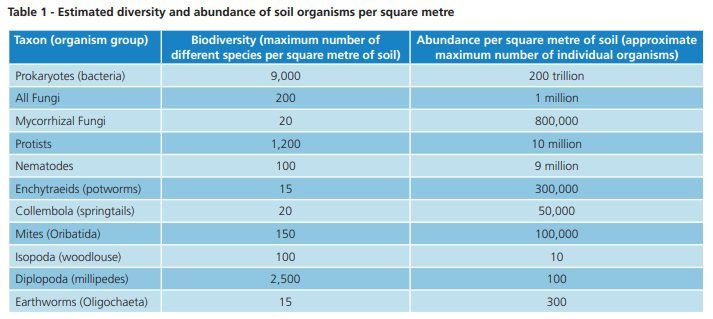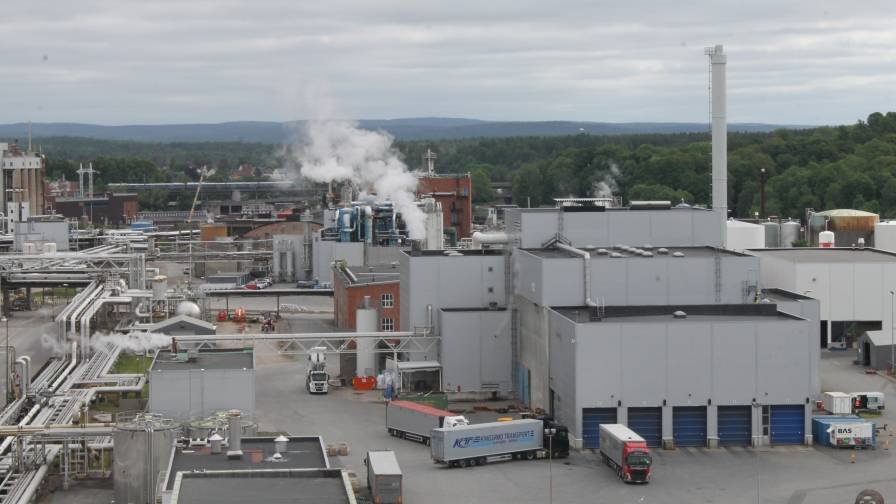Soil biodiversity is the term given to the balance of living organisms in the soil. A healthy soil will contain a large number and variety of organisms (i.e. have a high biodiversity) which will interact to provide a wide variety of ecosystem services. Increasing biodiversity will improve the resilience of the soil to environmental changes while also influencing the chemical, physical, and biological properties of the soil to make it more productive.
It is estimated that more than 13000 species per ha live in the soil and that biomass equates to a total weight of over 5 tonnes. Bacteria and fungi make up the highest number of the biomass and are the primary decomposers of organic matter in the soil and release nutrients into the soil. They then provide food for the macro-organisms like earthworms that, in return, work like tiny cultivators enhancing the mobility and absorption of soil nutrients. This is often referred to as the ’Soil food web’.

This food web provides a delicate ecosystem for all of these organisms to survive and thrive. When in balance these soil organisms will:
- Control plant pests and diseases
- Decompose organic matter, making nutrients available for plant growth
- Improve soil structure
- Improve plant growth and nutrition e.g. mycorrhizal fungi are more efficient at accessing soil P than roots, growth promoting-rhizobacteria access micro-nutrients
- Sequester carbon - important in maintaining soil organic matter levels and mitigating climate change
- Detoxify contaminants
Factors that affect healthy Soil Biology and Decrease Biodiversity
- Cultivation
- Use of chemicals - use of pesticides, fungicides, herbicides and many chemical fertilisers
- Excessive moving and handling of soil
-
Extreme weather
How to Increase Diversity in the Soil and create a healthy and functioning Soil Food Web
Ensure there is a ready and ample supply of organic matter being recycled into the soil. This is the food for the microbes. Biologically friendly fertilisers help soil biology thrive and provide another food source., products like humates, fish and seaweed are beneficial. To boost microbial diversity in the soil we can plant mixed pasture swards, use biologically friendly fertilisers or add biology directly through bio-stimulants or other biological inoculants like EM. EM works by getting the natural processes to function, the way nature intended by stimulating biological activity in the soil. EM will not only add to the microbial population but will also stimulate resident microbes. This stimulation can lead to increasing the resident nitrogen fixation capacity directly through the increase of N fixing bacteria, and indirectly by increasing clover growth, increasing mycorrhizal activity and other fungal and earthworm activity. When microorganisms are activated, protozoans and larger organisms such as worms will increase in number and a healthier ecosystem will result.
Source link












